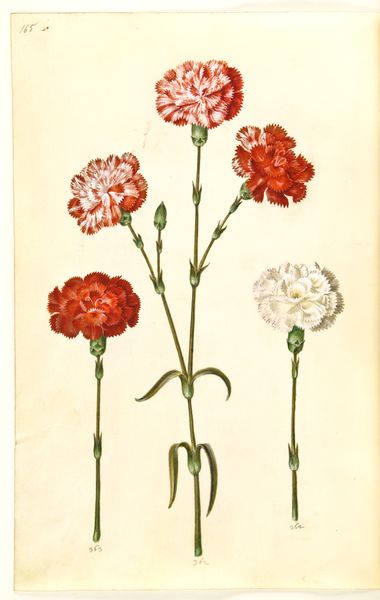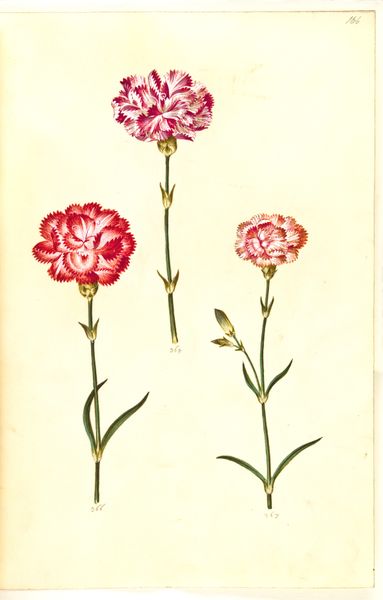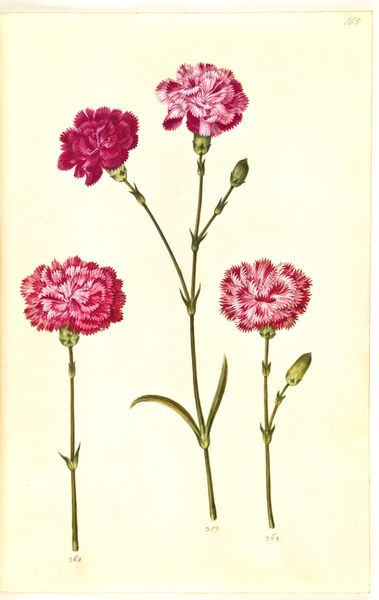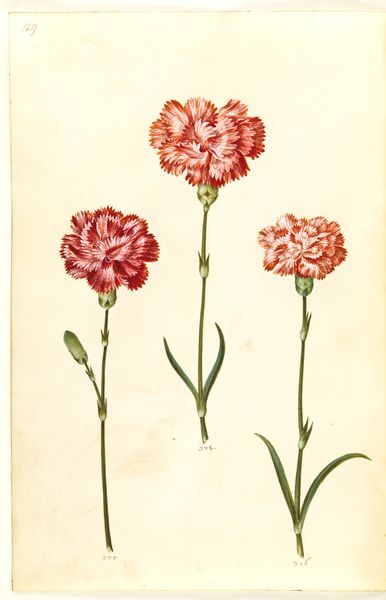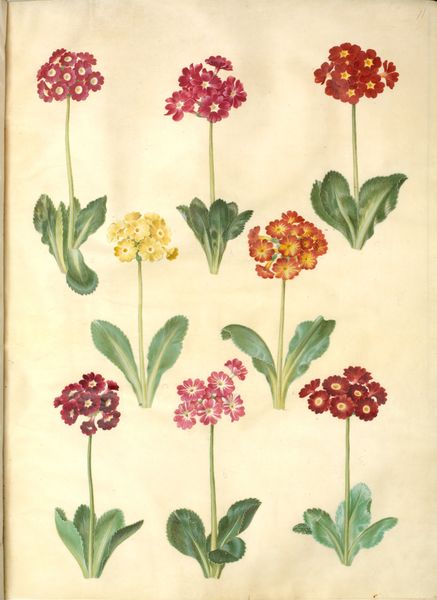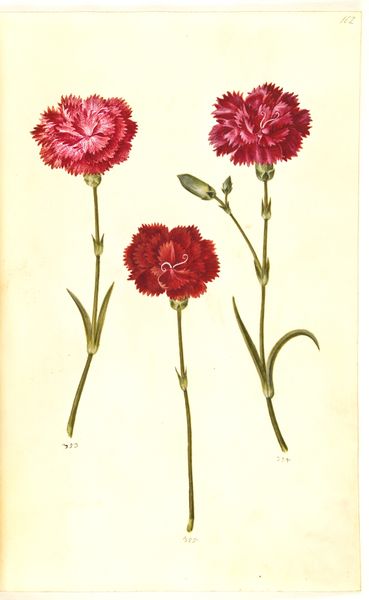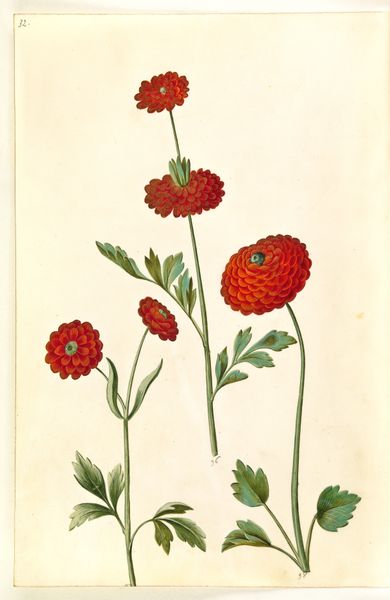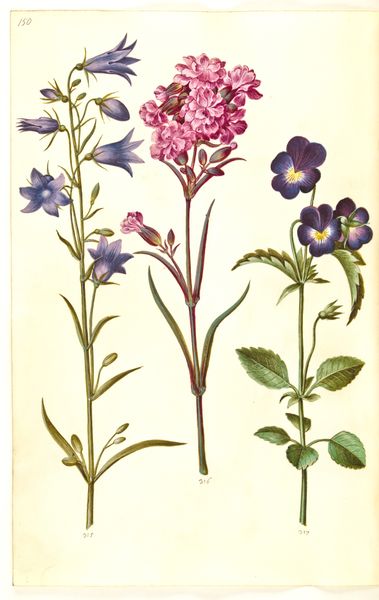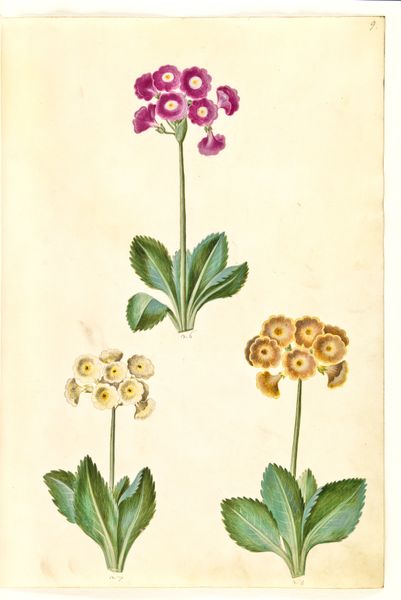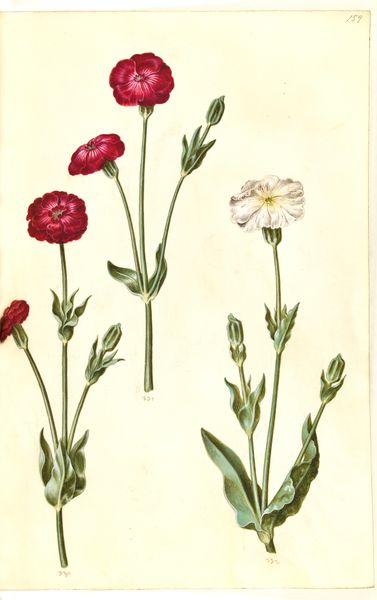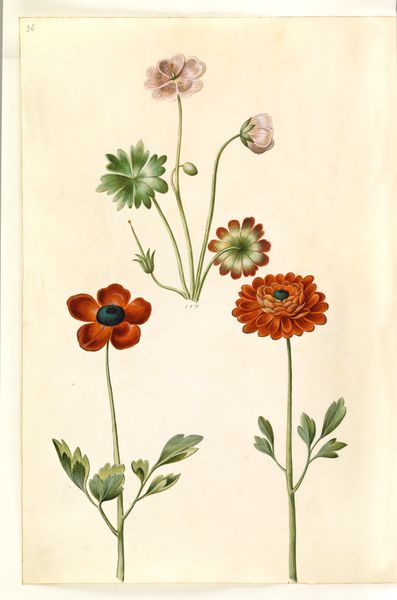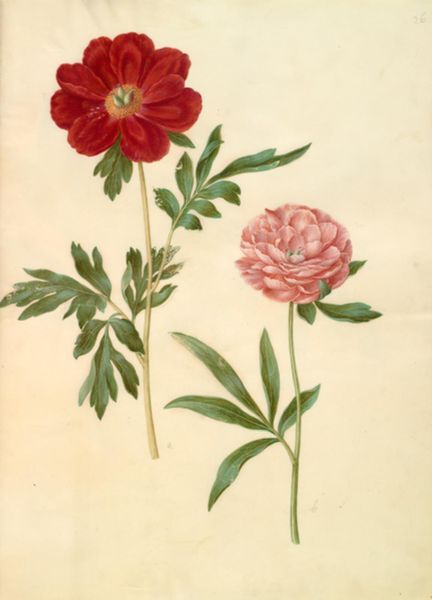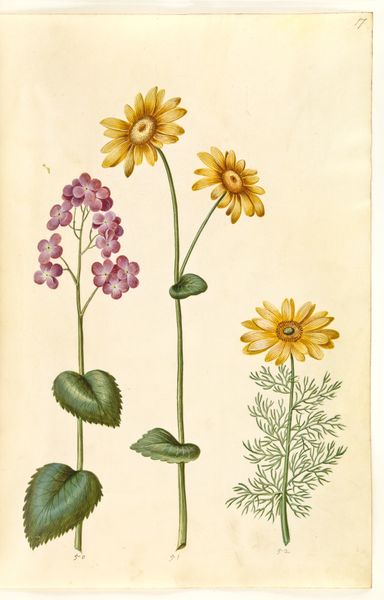
Silene chalcedonica (brændende kærlighed); Dianthus barbatus (studenter-nellike) 1635 - 1664
0:00
0:00
drawing, painting, gouache
#
vegetal
#
drawing
#
painting
#
gouache
#
early-renaissance
#
botanical art
Dimensions: 375 mm (height) x 265 mm (width) x 85 mm (depth) (monteringsmaal), 358 mm (height) x 250 mm (width) (bladmaal)
Curator: These painted botanical studies by Hans Simon Holtzbecker from sometime between 1635 and 1664 present two specimens against a blank canvas: Silene chalcedonica, or brændende kærlighed in Danish, and Dianthus barbatus, the studenter-nellike. Editor: Well, hello there, you fiery burst of petals! At first glance, that scarlet bloom just pops—almost aggressively cheerful against the muted background. And beside it, that more demure, lilac blossom offers such a contrast, like a quiet sigh of relief. Curator: These weren't just aesthetic exercises; these botanical drawings emerged during a period where the intersection of art and natural science flourished. Aristocrats collected specimens in cabinets of curiosity, and scientific illustration was booming. These flowers represent wealth, privilege, the power to collect and classify. Editor: Fascinating. I do love thinking of someone painstakingly recreating every vein in those leaves. The detail is lovely! Though, that stiff formality also kind of amuses me. Like nature pressed into behaving. You almost feel like you're viewing the botanical equivalent of a formal court portrait, don't you? Curator: Precisely. The painting, done with gouache and watercolor, is meticulously rendered. These were studies, perhaps for a larger work or to be part of a codex. We have to consider the role of Holtzbecker too: he was not just recording nature but shaping it, selecting these particular plants and presenting them in this composed manner. What narrative did that choice reinforce about humanity's role as stewards of nature? Editor: And they're quite isolated here. Each element feels chosen, meaningful... even if I am not sure I could explain the significance. I think that’s why art like this can keep speaking through centuries: we still bring ourselves, our contexts to it. Curator: I agree. There’s always more to excavate beyond the surface-level beauty, cultural power at play in our relationship with the environment. Editor: A potent combination of the beautiful and the meaningful…that's always stuck with me after encounters with works like this. Thanks for chatting!
Comments
No comments
Be the first to comment and join the conversation on the ultimate creative platform.
